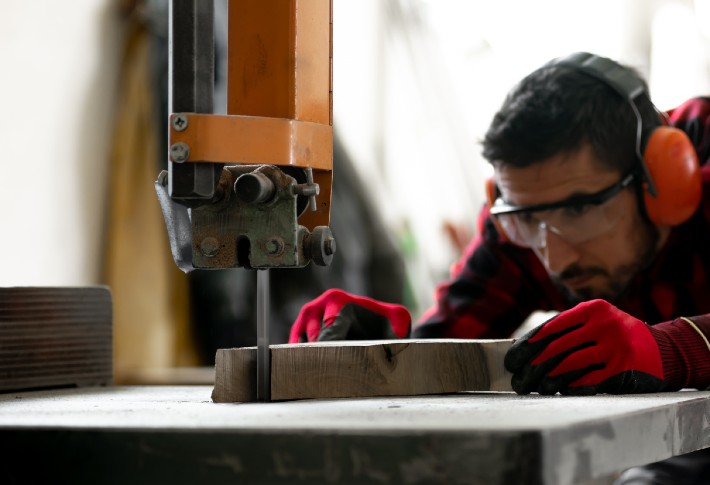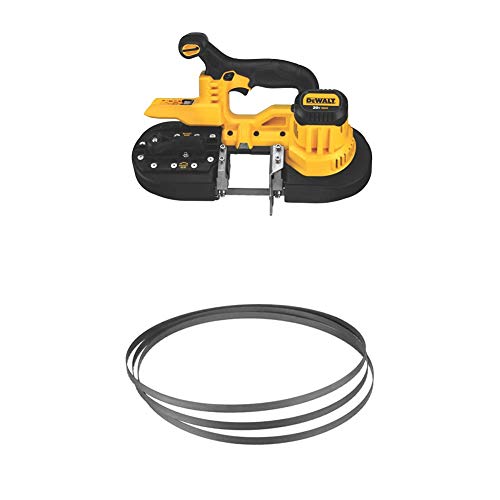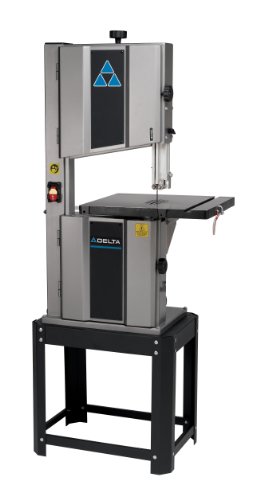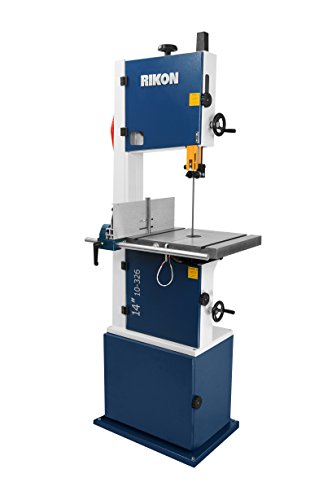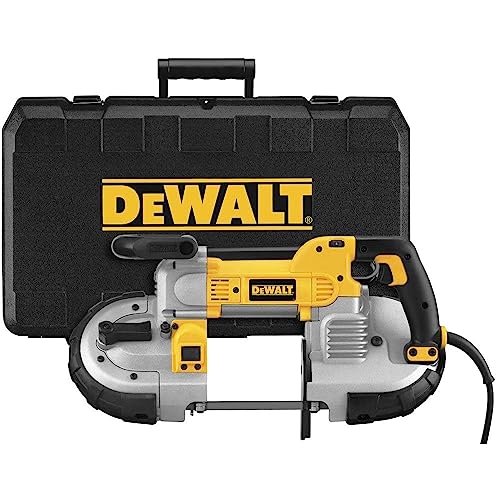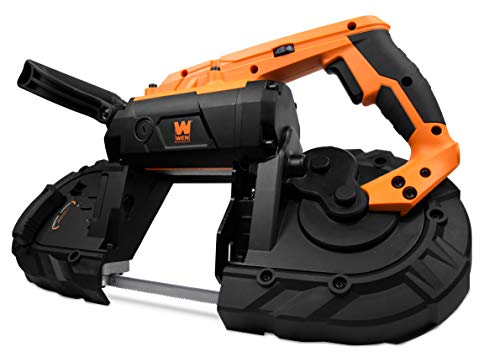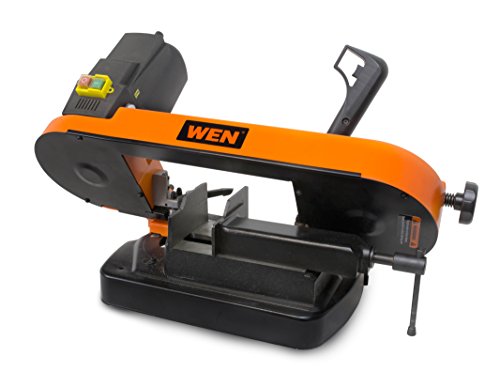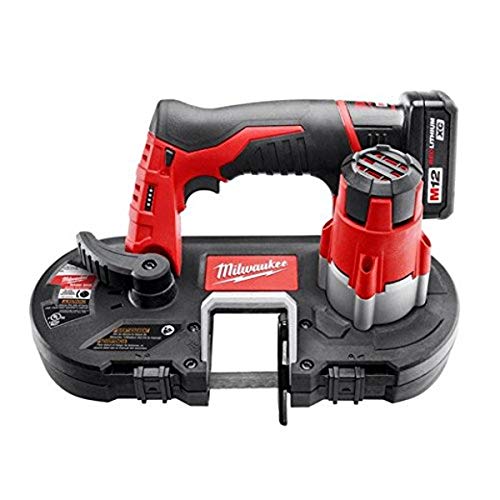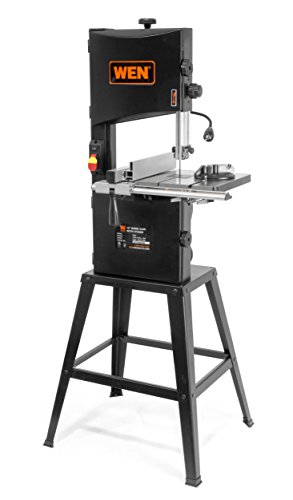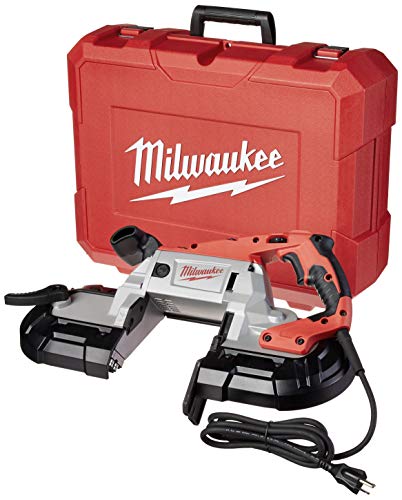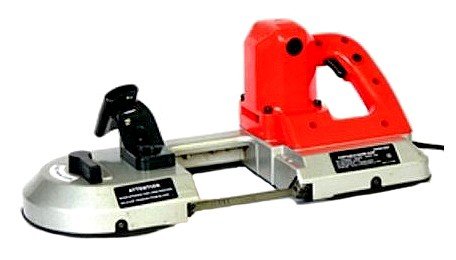A bandsaw is a good choice of power tool in a lot of industries for a lot of great reasons. Bandsaws work for personal household or professional usage and are helpful for cutting wood, metal, and a wide variety of other materials.
Usually, band saws come with a thin, flexible blade that allows you to carve exciting patterns on the material you’re working with. Band saws are powerful tools that not only allow you to replace the blade easily to fit the material type but also help you reach the desired cut and achieve a perfect finish! You can cut wood, metal, and more with a band saw.
It can be pretty bothersome to explore the different makes, models, types, etc., of bandsaws to find the suitable bandsaw for the job. Lucky for you, we’ve listed the most relevant information about band saws in this section to help you make a decent purchase.
What Are the Different Types of Band Saws?
Generally, band saws are classified into two main types:
- Free-standing (benchtop) band saw.
- Compact band saw.
Both these types have their own pros and cons. Let’s dig in!
Free standing/benchtop band saw.
This type of band saw requires a constant flow of power through any electric source/power outlet. They are usually made with two different frame materials – cast iron and steel. Both materials are durable and come with a longer lifespan. Benchtop band saws are helpful for both personal and professional use due to their resawing ability!
Compact band saw
A compact band saw is a cordless, portable bandsaw that generates power through a rechargeable battery. Thanks to a no cord and compact design, you can easily use this type of band saw anywhere and anytime.
What Things Should You Consider Before Buying a Band Saw?
Here are some of the important things that you should take into account before buying band saws.
Motor
This is a crucial component of the band saw. A band saw’s motor provides the necessary power for the blade to cut through the required material. Motor power is measured in Watts or Horsepower. The speed of the motor is measured in revolutions per minute (RPM), and the cutting speed in feet per minute (FPM) – the distance moved by the blade through the material. The higher the rate, the greater a motor’s capability to work and ability to handle challenging jobs.
The motors can be categorized into two main types:
Brushed motor
This motor has been around for a long time. It is the most common type of motor found in various power tools. Brushed motors come with two main parts – brushes and a commutator. Energy is passed through the motor by the commutator. This helps make the saw blade function properly. The brushes (usually made of carbon) may get worn down after some time, and thereby you lose efficiency and quality.
Brushless motor
Unlike a brushed motor’s carbon brushes and commutator, this motor comes with a small electronic circuit board. Brushless motors can be more powerful because they provide a constant flow of energy by eliminating unnecessary friction.
Blades
The blade of a band saw is a large loop that is welded together with teeth at one side. The finish and the cut quality of the saw blades can be measured by the number of teeth per inch (TPI). The higher TPI, the higher the quality cut you will get from your saw. Lower TPI will result in a faster cutting but usually will leave a rougher finish. To make the best choice, you must also consider the saw blades’ length and width along with their TPI.
Blade tension
Most band saws will come with a feature that allows you to track blade wear and tear and also adjust the blade tension to the desired level. This assists you in monitoring the blade’s lifespan and pointing out any inherent damages.
Types of blades
Band saws usually require different types of blades as one blade cannot fit all of the applications. Here are some of the few common band saw blades:
Hook-tooth blade
This type is perfect for cutting quickly with extreme ferocity. It works well on various materials like thick woods, certain metals, hardwoods, plastic, etc. It comes with more prominent teeth and deeper gullet.
Skip-tooth blade
This type of bandsaw blade puts more space between teeth to prevent resin build-up. It is widely used for cutting non-ferrous materials, plastics, and softwoods.
Regular tooth blade
This is a common type of blade that is used in all applications. It performs well cutting various materials that are thinner and finer than others. Because it provides excellent flexibility, it has been universally accepted as an all-rounder blade.
Bevel
This refers to the angle at which the worktable can be tilted from either right or left. Tables with tilting options add some variation to the cutting and are perfect for angled cuts. Generally, the benchtops come with a bevel ability of 45 degrees.
Variable speed
You will need to cut different materials with different levels of thickness, and a universal speed setting is just not going to cut it every time. Your band saw should come with variable speed triggers/dials options to get greater control over the speed. Variable speeds are helpful for those who work with a variety of materials, and it promotes quality cuts.
Throat size/capacity
The throat size is the space behind the blade that reaches out to the furthest point of the table (column). A larger table comes with a larger throat size, and the smaller tables have a smaller throat size. For most models of free-standing band saws, the throat size will range from 9 – 21 inches.
Table frame
Band saw work table frames usually come in two styles; cast iron and welded steel. The steel frame resists vibration under heavy loads more than cast iron frames. Also, the steel saw enables accurate cutting without reducing the strength and deflection. The steel work table frames come in sizes ranging from 12 – 24 inches. The cast iron table frame is excellent for day-to-day band saw operations, even if their cutting capacities have limited functions.
To learn more about the different features of band saws, watch this video from Stumpy Nubs:


